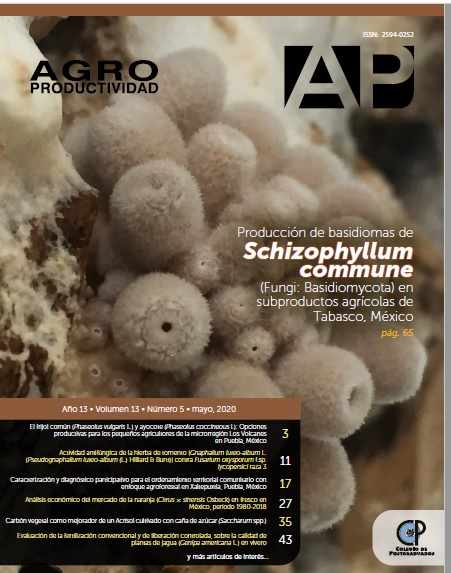Effect of sulphatic salinity in quinoa (Chenopodium quinoa Willd.)
Main Article Content
Keywords
nhouse, quinoa, sulphatic salinity, semi-hydroponic system
Abstract
Objective: Evaluate a quinoa (Chenopodium quinoa Willd) cultivar in a semi-hydroponic system, simulating different levels of sulphatic salinity (CaSO4·2H2O a 0, 3 000, 4 000 y 5 000 µS cm-1).
Design/methodology/approach: The cultivation of quinoa established in a semi-hydroponic system, simulating different conditions of sulphatic salinity, taking as a source of salinity reactive grade dihydrated calcium sulphate (CaSO4 · 2H2O), this salinity source is obtained to simulate the conditions of the evaporitic basin of Río Verde-Matehuala, where a saline diversity of waters and soils mainly calcium sulphate is formed. The reactions were 0, 3,000, 4,000 and 5,000 µS cm-1, being that null in salts, the treatment control.
Results: The seed yield per plant in sulfate salts treatments ??were for 3,000 µS cm-1 with 30.65 g/p, following the treatments of 4,000 µS cm-1 with 23.31 g/p and 5,000 µS cm-1 with 19.13 g/p; on the other hand, the control resulted in the highest value in yield with 43.41 g/p.
Limitations on study/implications: It is important to develop more studies under biotic and abiotic conditions that occur in other regions and test another type of salinity such as hydrochloric.
Findings/conclusions: Under the conditions in which the study will be affected, it is possible to grow quinoa in sulphate soils, but with the restrictions imposed by the effect of the decrease in osmotic potential damaged by salts.

